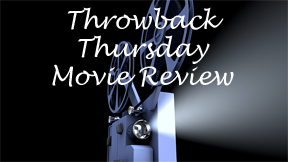In the late-1990s gamut of “mysterious alien object/message” movies, “Contact” (1997) is the mainstream one – in the best sense of that term. You can safely recommend it to anyone. It won’t turn off people for being too action-oriented (“Independence Day”), funny (“Men in Black”), scary (“Event Horizon”) or cerebral (“Sphere”). But it’s nonetheless robust: Writers James V. Hart and Michael Goldenberg caringly adapt Carl Sagan’s 1985 novel (see below) into something that has big emotions through its characters without abandoning the “This is how alien contact might really happen” point of the book.
A big tent
Not surprisingly, Hart and Goldenberg have written many kids movies, and with Alan Silvestri’s music leaning toward tear-duct-targeting piano notes, there’s undeniably a broadness to “Contact.” It fits, though, as director Robert Zemeckis’ film argues that Earth – to say nothing of the universe — is a big enough tent for everyone.
The main conflict is science versus religion. Today, I don’t think it’s as big of a deal to be openly atheist, but if memory serves, the issues Ellie Arroway (Jodie Foster) faces in 1997 are genuine. Being atheist — when another top candidate, Tom Skerritt’s David Drumlin, believes in God – would likely be enough to knock her out of the “machine seat” that goes to the person who will serve as the ambassador for all humanity on a trip to Vega.

“Contact” (1997)
Director: Robert Zemeckis
Writers: James V. Hart, Michael Goldenberg (screenplay), Carl Sagan (novel)
Stars: Jodie Foster, Matthew McConaughey, Tom Skerritt
“Contact” has it both ways – respecting both science and God – but this is not a criticism, it’s a beautiful and delicately crafted aspect of the film. Ellie’s boyfriend, the Rev. Palmer Joss (Matthew McConaughey), is “a man of the cloth, without the cloth.” He’s a friendly rock-star-style spokesperson for the theist world, not emphasizing a single denomination, and indeed, dating an atheist.
It seems unlikely in the real world that someone with these traits would rise to the top of the religious celebrity tower, but then again, Joss is darn cool – and he and Ellie make an appealing couple even if such a pairing is wishful thinking.
A balanced approach
By the end, Ellie needs to present proof of her alien encounter when she can’t provide any, yet I don’t feel like “Contact” comes down against atheists. I think it argues that there’s room for both sides to understand each other and relate to each other – and overlap.
Even if “Contact’s” theme is a little dated, the movie offers plenty of other hooks. The cast is impeccable, including William Fichtner in a believable turn as a blind scientist whose acute hearing comes in handy.
As James Woods fills a nominal “villain” role as the closest link to the president (by the way, Clinton is nicely integrated via real footage sometimes combined with a voice actor), Skerritt is an intriguing presence as a past obstacle to Ellie’s research funding who might not be such a bad guy.

John Hurt provides a perfect outsized touch as a corporate magnate whose funding and connections bring us through the less plausible parts of the story.
A lovable lead
But “Contact” hooks us from the start with flashbacks to young Ellie (Jena Malone) and her dad (David Morse, whose soft voice serves him well). Ellie’s lump-in-the-throat “CQ, CQ … Dad … Can you hear me?” is the reason why I have to watch “Contact” without other people in the room.
That’s where the film hooks you, and the rest is a process of reeling you in with the genuine drama of the message, the decoding process, the political frustrations and decisions, and then the journey.
One narrative hiccup: Would the 18 hours of static be kept from the American public? And once that’s decided, could it be kept from them? I don’t think enough is gained from this “one last twist” at the expense of implausibility; I think it could’ve been part of the inquiry proceedings.
Sagan died six months before “Contact” came out, and it remains a beautiful tribute to who he was professionally and personally.
5 stars
THE NOVEL
Both times I read Carl Sagan’s “Contact” – in 1997 and recently – it was as a companion piece after watching the movie, and I think that’s the right way to do it. The book is beautifully written, blending science and math with Sagan’s sense of wonder, similar to his nonfiction books and his narration of TV’s “Cosmos.”
Science is his strength
But it’s a relatively weak piece of storytelling and character writing; I’m not surprised that this is Sagan’s first and only novel and that he had to be nudged into writing it so the film could springboard from it. I can tell he (working closely with Ann Druyan) developed the idea of “the message,” “the machine” and the visit to “The Station” more so than the logic behind each step. For example, a character simply thinks “I bet it’s a machine,” and that turns out to be the case.
Sagan is more concerned about the world’s reaction to the situation than Ellie’s, which makes sense for the medium. He adds four international characters to join Ellie on the final-act mission, a noble sentiment that also underscores how undercooked they are compared to Ellie.

“Contact” (1985)
Author: Carl Sagan
Genre: Science fiction
Settings: New Mexico, Wyoming, Japan, space, in a future 1999
But Sagan’s flights of fancy, as you’d expect, go deeper than a mainstream film. From the perch of the early 1980s, he imagines the future of 1999. Like most SF writers, he overestimates space travel and underestimates cellphones and the internet. Still, Sagan delivers tasty notions; my favorite is the invention of an automatic TV commercial muter that leads to lawsuits and new strategies in both advertising and ad-blocking.
Eclectic supporting cast
The inventor of that device, Hadden (the reclusive business magnate played by John Hurt in the film), suffers loneliness less than the average man, and is perfect for another groundbreaking idea. He aims to float through space in a capsule until his supplies run out, then freeze himself, intending to be revived by aliens.
With nods to Ellie, Ellie’s dad, Drumlin and Kitz, Hadden is the character who most remains intact from book to film. The film has a richer supporting cast; the book has more side characters, but the only ones who pop are religious leader Palmer Joss (an older man here, with no romantic designs on Ellie) and Ellie’s Russian scientist friend who is both a womanizer and an admirer of women.
Hadden’s thread has little connection with the main plot, but it’s a fantastic chapter to read. And that’s how most of Sagan’s “Contact” is. I dipped in for a chapter here and there, always excited to see the author’s mind at work, but not driven forward by story, character or theme.
Deeper debates
That’s not to say there isn’t a great theme buried here, just that it disappears and reappears rather than being infused in the text. As with the film, that theme is science versus religion. Here, Palmer Joss is a wise elder whom Ellie (and Sagan) respects; a televangelist type is also on hand to provide a harsher stereotype.
Joss and Ellie have engaging, mature debates. When Ellie professes herself to be a Christian because she admires Jesus as a human being – a notion that basically draws a blank stare from Joss – I sense that Sagan is expressing a feeling common to atheists. We long for some of the camaraderie of religion, but our desire for scientific evidence means our spirituality will inevitably be of a lonelier variety.
Through “Contact,” Sagan finds spirituality in science and math (with a pretty awesome final-chapter revelation), but it’s the intellectualism that shines through. In the movie, emotions and the drama of each revelation come to the fore. The book is richer because of the movie’s existence, but the book remains a wonderful accompaniment.
4 stars

